Eswatini Flag Meaning
Five horizontal stripes of blue, yellow, red, yellow, and blue with a traditional Swazi shield and two spears overlaid on the center red stripe, representing peace, mineral wealth, past struggles, and the protection of the kingdom.
- Continent
- Africa
- Adopted
- 1968
- Ratio
- 2:3
- Colors
- blue, yellow, red, black, white
- Designer
- King Sobhuza II
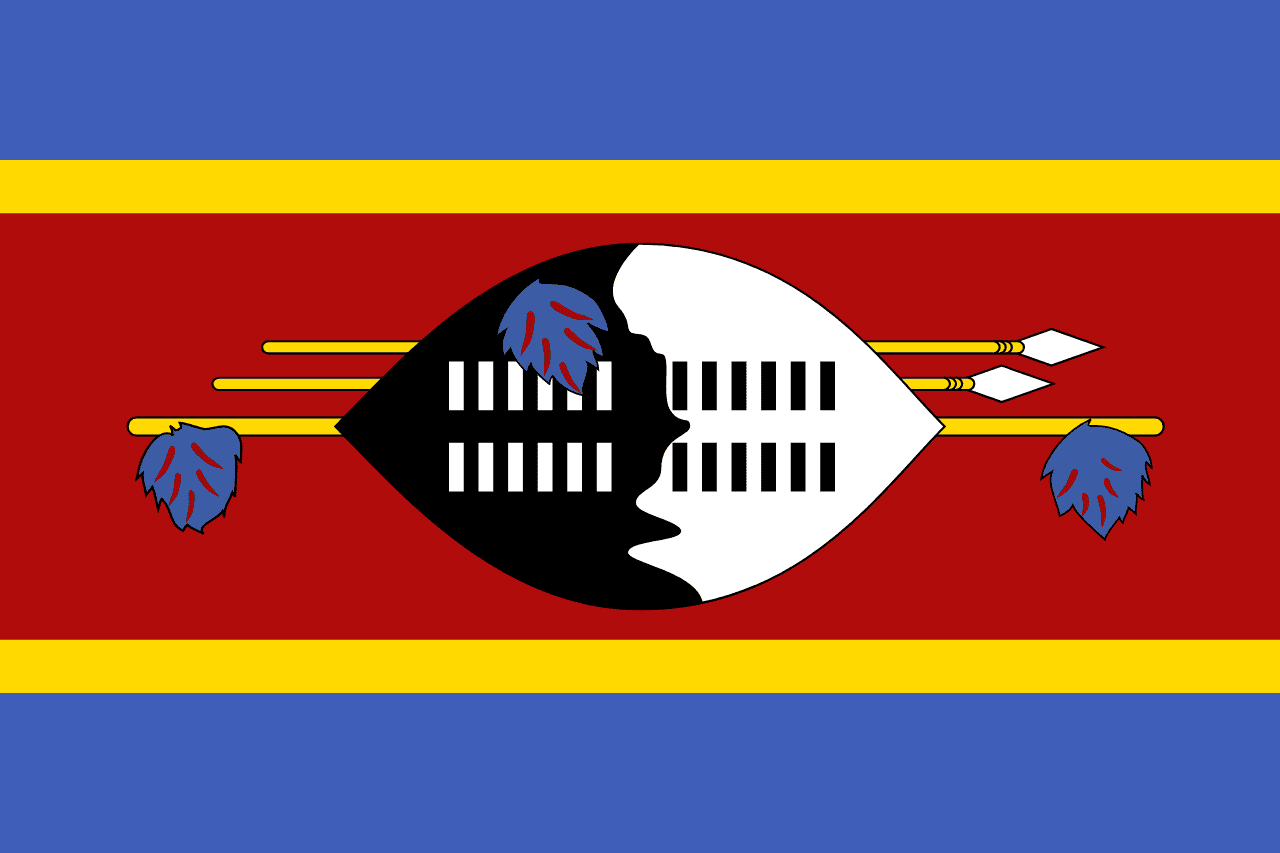
Symbolism
Blue Stripes: Represent peace and stability, symbolizing the tranquil nature of the Swazi people and their desire for harmony both within the kingdom and with neighboring nations in Southern Africa.
Yellow Stripes: Represent the mineral wealth and natural resources of Eswatini, symbolizing the economic potential of the kingdom and the prosperity that can be achieved through wise use of natural endowments.
Red Central Stripe: Represents the blood shed in past battles and struggles for independence, symbolizing the sacrifices made by the Swazi people to maintain their sovereignty and traditional way of life.
Nguni Shield: A traditional black and white oxhide shield represents protection and the warrior traditions of the Swazi people, symbolizing the defense of the kingdom and the preservation of Swazi culture and customs.
Two Spears and Fighting Stick: Represent the dual nature of defense and the traditional weapons of Swazi warriors, symbolizing readiness to defend the kingdom while also representing the tools used in traditional ceremonies and cultural practices.
History
- 1400s-1800s: The Swazi people, led by the Dlamini clan, migrated south and established settlements in the region, developing a distinct culture and traditional monarchy under various chiefs and kings.
- 1840s-1860s: King Mswati II expanded and consolidated Swazi territory, giving his name to the Swazi people and establishing the kingdom's borders through diplomacy and warfare with neighboring groups.
- 1890s-1968: Swaziland became a British protectorate after the Anglo-Boer War, with traditional Swazi monarchy continuing under British oversight while maintaining cultural autonomy and traditional governance structures.
- September 6, 1968: Swaziland gained independence from Britain, with King Sobhuza II adopting the current flag design to represent the sovereign Kingdom of Swaziland and its traditional monarchy.
- 1973: King Sobhuza II suspended the constitution and dissolved parliament, establishing absolute monarchy and traditional Swazi governance while maintaining the flag as a symbol of royal authority.
- 1986-Present: King Mswati III ascended to the throne and has ruled as Africa's last absolute monarch, with the flag representing continuity of traditional Swazi culture and monarchy.
- April 19, 2018: King Mswati III officially changed the country's name from Swaziland to the Kingdom of Eswatini, meaning 'land of the Swazis' in siSwati, while maintaining the same flag design.
Trivia
- Eswatini is Africa's last remaining absolute monarchy, with King Mswati III ruling without constitutional constraints and maintaining traditional Swazi governance systems.
- The flag represents one of the world's smallest countries, with a population of only about 1.2 million people in an area roughly the size of New Jersey.
- Eswatini is completely landlocked and surrounded by South Africa except for a small border with Mozambique, making it heavily dependent on its neighbors economically.
- The Reed Dance (Umhlanga) is one of Eswatini's most famous cultural ceremonies, where unmarried women present reeds to the Queen Mother and the King may choose a new wife.
- Eswatini has one of the world's highest HIV/AIDS prevalence rates, with about 27% of adults living with HIV, creating significant public health challenges.
- The flag flies over a country where polygamy is legal and the King has multiple wives, reflecting traditional Swazi marriage customs and royal prerogatives.
- Eswatini's economy depends heavily on customs revenue from the Southern African Customs Union (SACU) and remittances from workers in South Africa.
- The country has two capitals: Mbabane (administrative) and Lobamba (legislative and royal), with the flag representing this dual seat system.
- Traditional Swazi culture remains strong, with many people wearing traditional dress and participating in cultural ceremonies throughout the year.
- Eswatini is known for its handicrafts, particularly colorful woven baskets, wood carvings, and traditional pottery that reflect Swazi artistic traditions.
- The flag represents a country where the Swazi language (siSwati) and English are both official languages, reflecting both traditional and colonial influences.
- Eswatini has significant sugar plantations and is a major sugar exporter, with sugar being one of the main pillars of the economy.
- The Hlane Royal National Park and other protected areas make Eswatini a destination for wildlife viewing, including elephants, lions, and rhinos.
- Traditional Swazi architecture includes the distinctive beehive-shaped huts made from grass and branches, which remain common in rural areas.
- Eswatini's education system has achieved high literacy rates, and the country has made progress in promoting girls' education despite traditional gender roles.
Related Countries
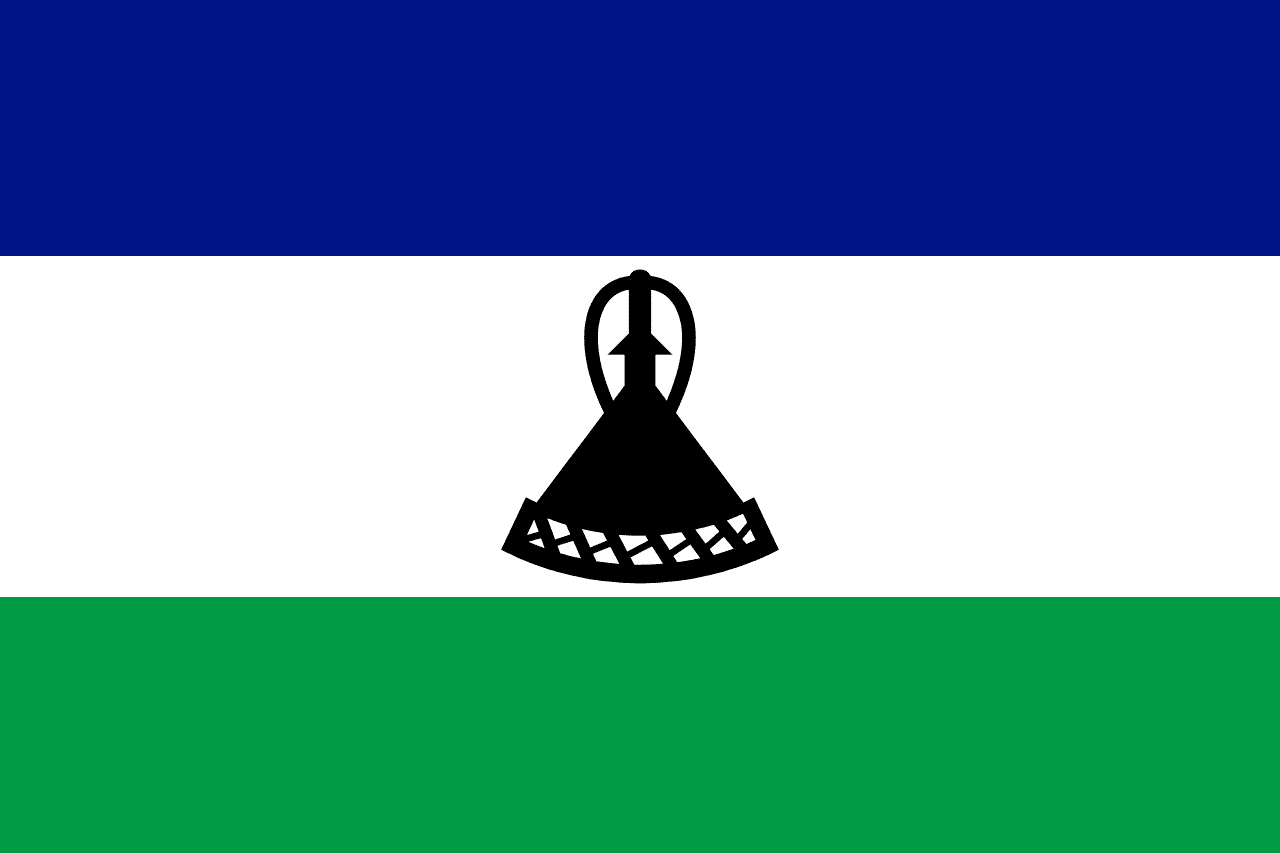
Lesotho
Africa
Three horizontal stripes of blue, white, and green with a black traditional Basotho hat (mokorotlo) centered on the white stripe, representing peace, rain, prosperity, and the cultural heritage of this mountain kingdom completely surrounded by South Africa.
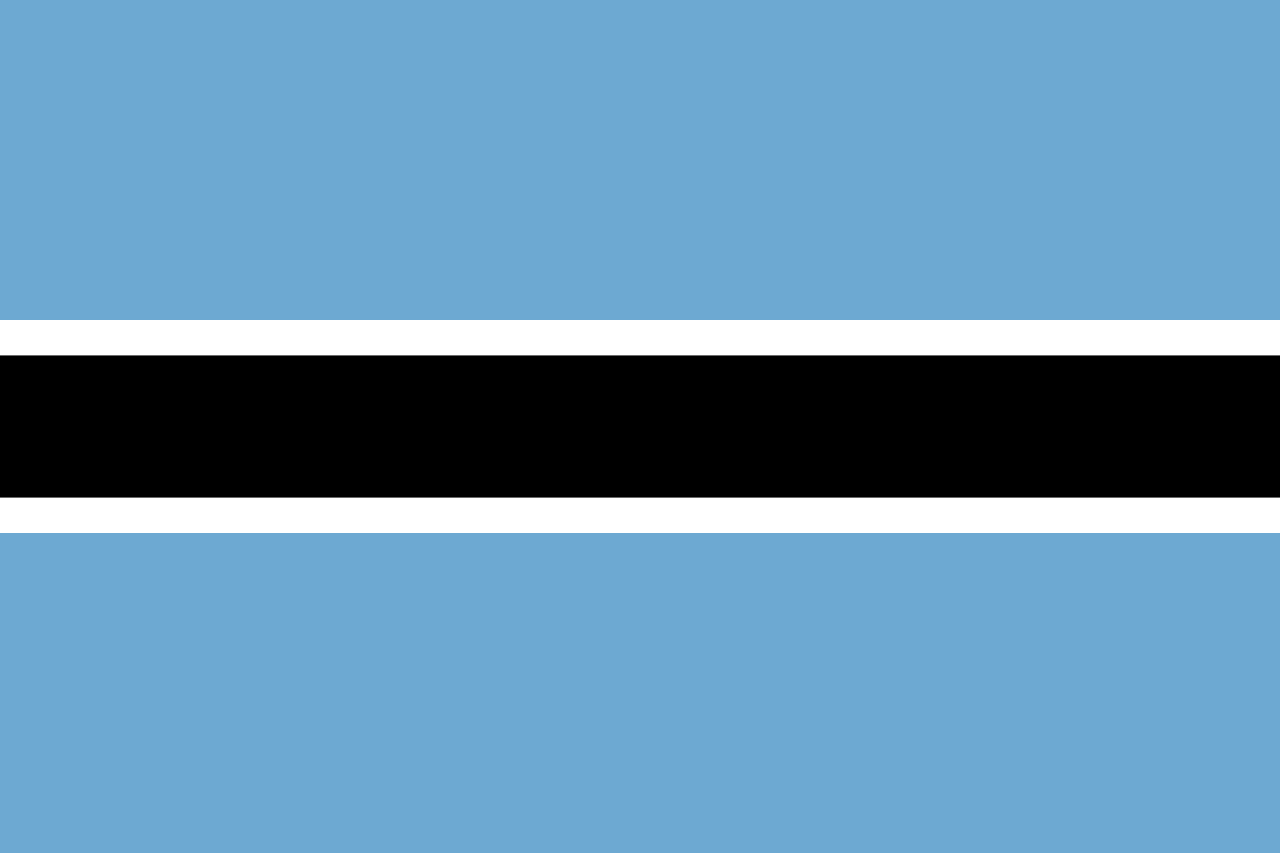
Botswana
Africa
Light blue field with a central black horizontal stripe bordered by thin white stripes, representing the life-giving rains, racial harmony, and the zebra that symbolizes the coexistence of black and white people in peace.
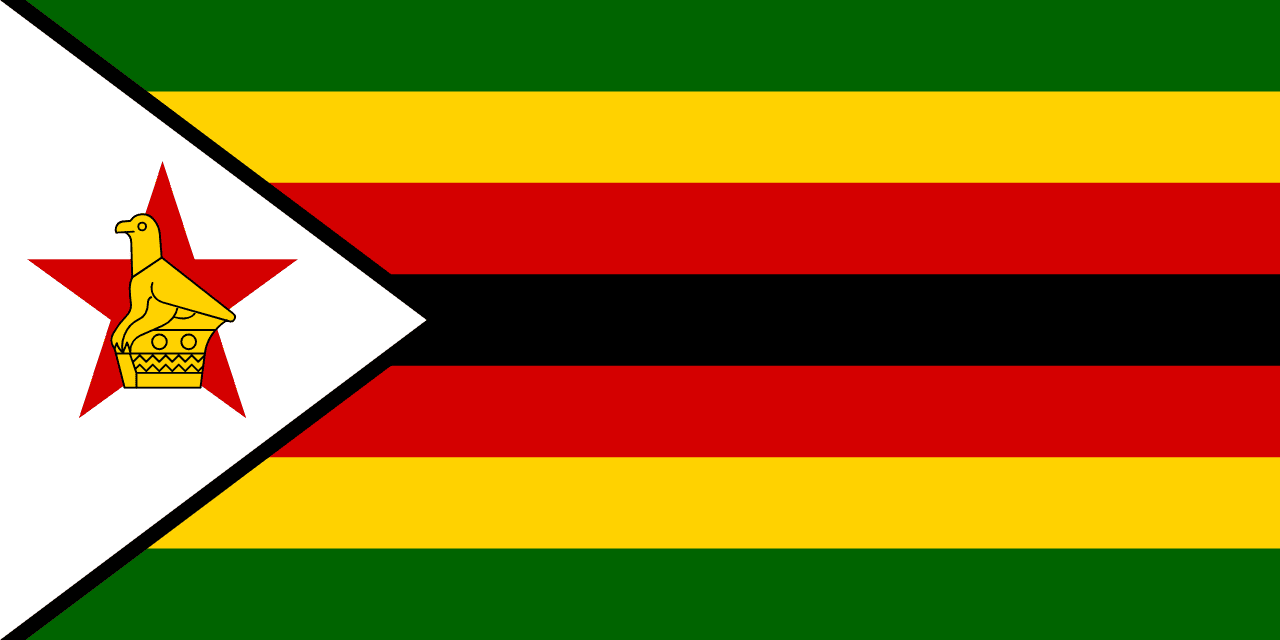
Zimbabwe
Africa
Seven horizontal stripes alternating green, yellow, red, black, red, yellow, green with a white triangle at the hoist containing a red five-pointed star and the Zimbabwe Bird, representing the nation's agricultural wealth, mineral resources, blood shed for independence, the African people, peace, and the ancient civilization of Great Zimbabwe.
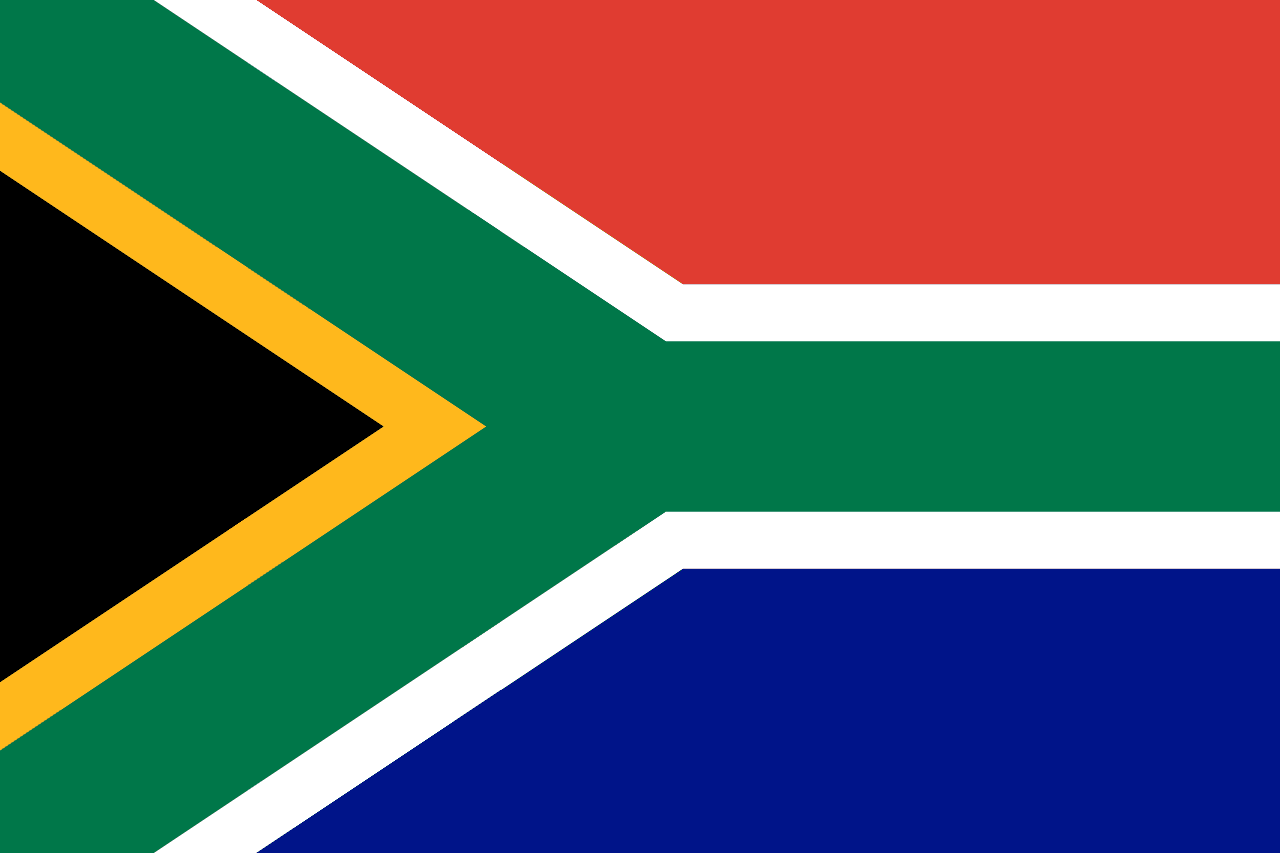
South Africa
Africa
A Y-shaped design with six colors converging toward the flag pole, representing the convergence of diverse elements in South African society and the country's path forward as a unified nation after the end of apartheid and the transition to democracy.
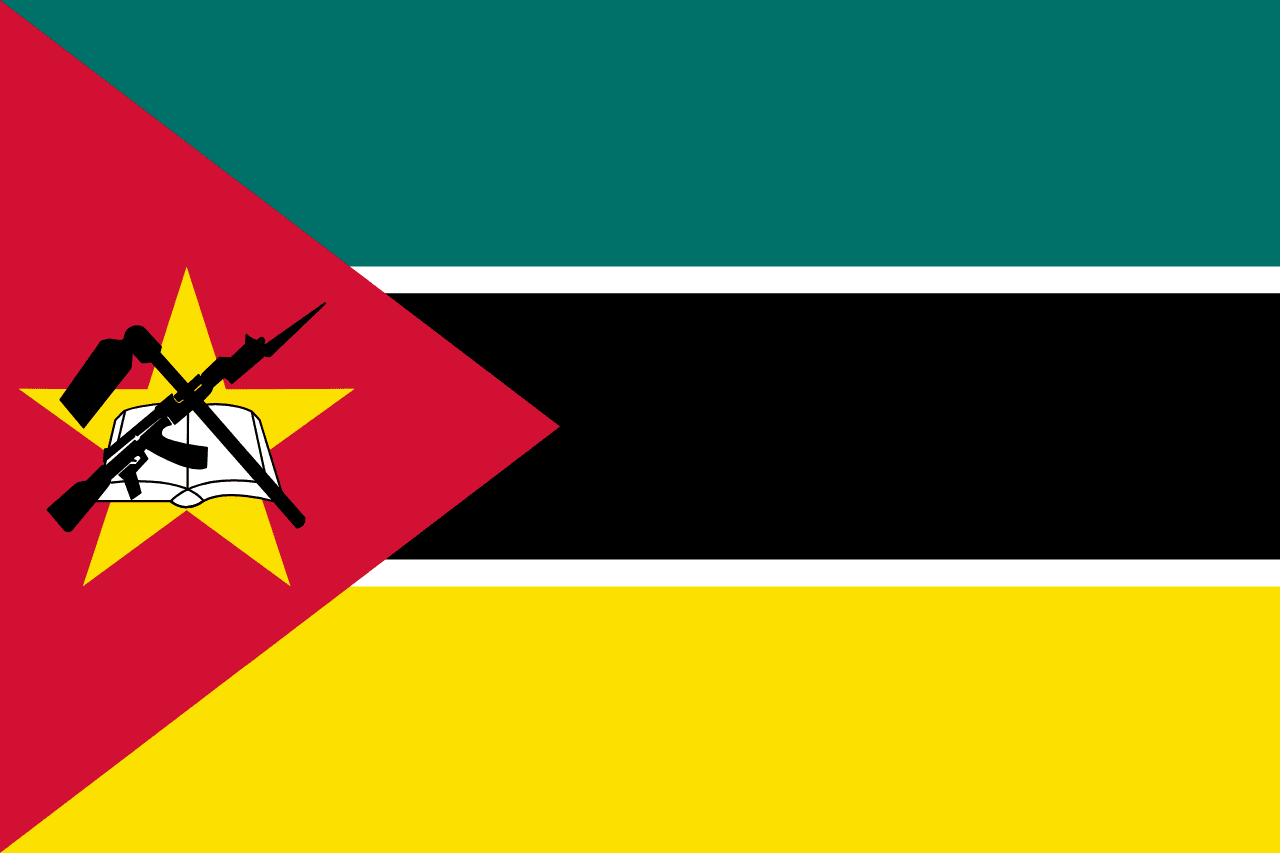
Mozambique
Africa
A horizontal tricolor of green, black, and yellow, separated by white fimbriations, with a red triangle at the hoist bearing a yellow star, a book, a hoe, and an AK-47 with bayonet. The flag uniquely features a modern weapon as a national symbol.
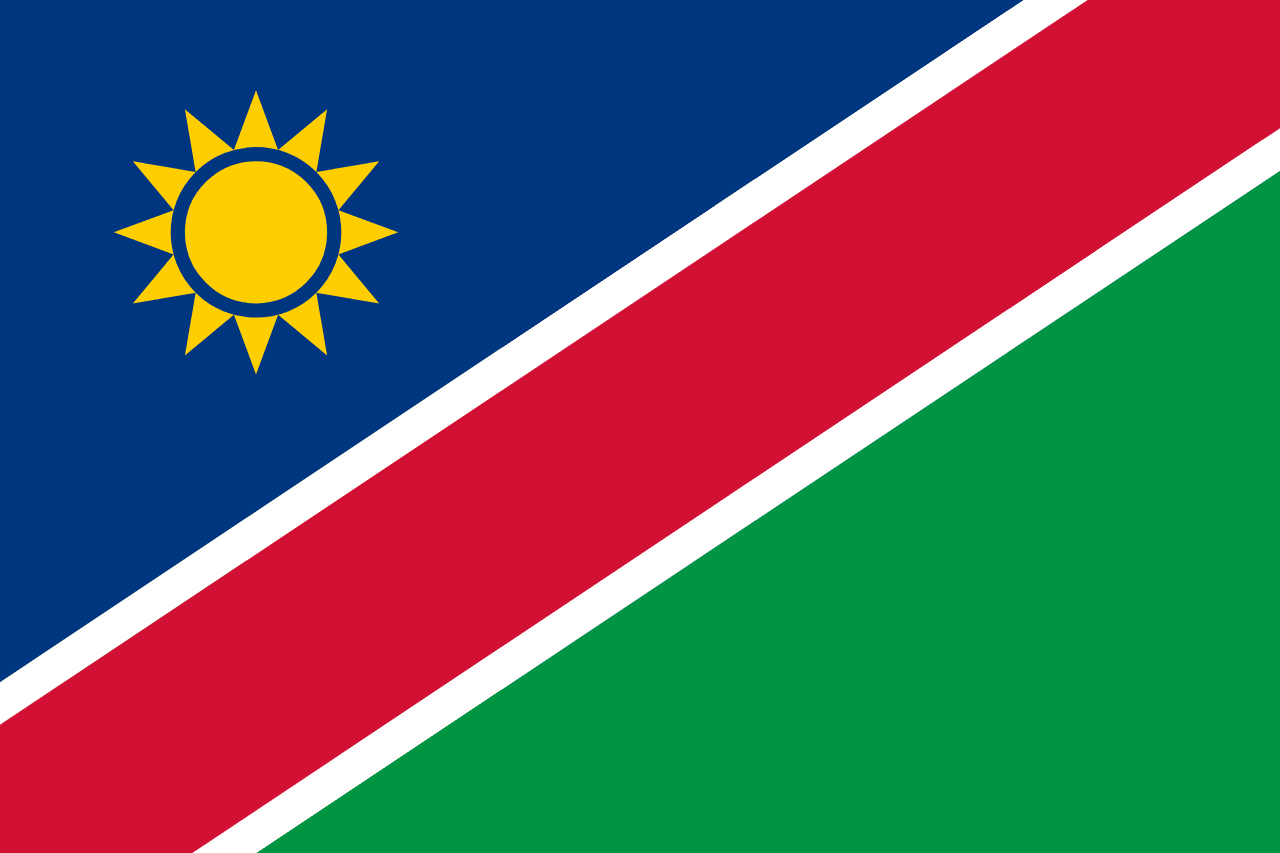
namibia
Africa
A diagonal tricolor divided from the lower hoist to upper fly by a red band with white borders, with blue in the upper hoist containing a golden sun, and green in the lower fly. The design symbolizes Namibia’s land, people, and resources.